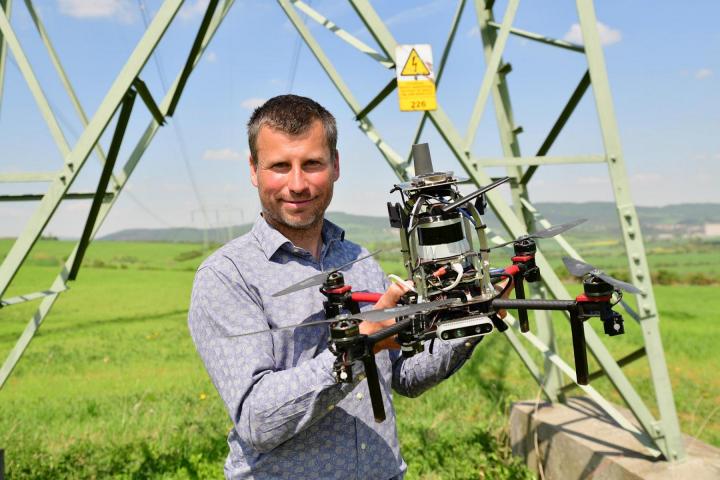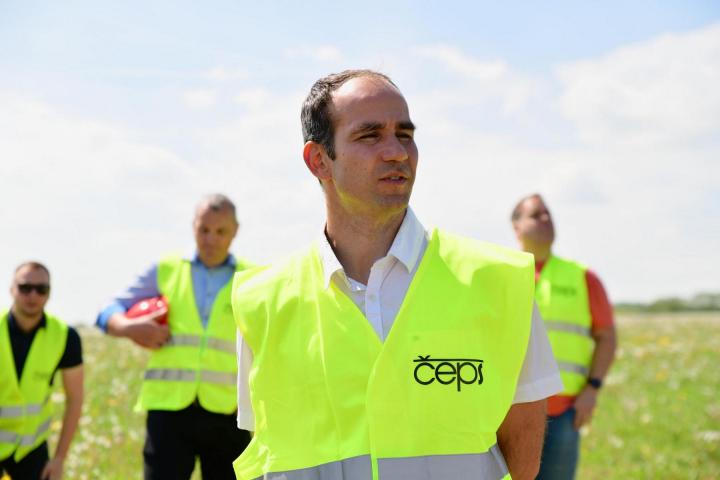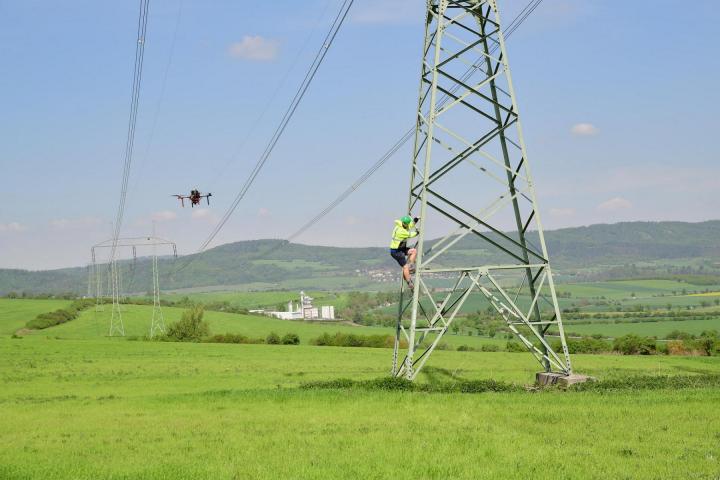
This vision is very close to becoming a reality in the near future. Thanks to scientists from the Faculty of Electrical Engineering, who, in cooperation with ČEPS, are testing the practical possibilities of inspecting power lines with the help of flying robots as part of the European Aerial-Core project. Current research results have been demonstrated by the Multirobotic Systems (MRS) group from the Faculty of Electrical Engineering on a section of power lines in the Beroun region.
In addition to dealing with sudden failures, both partners are focusing on robotizing preventive inspections of the entire large transmission system in the Czech Republic. Currently, power line inspection is provided by a manned helicopter that flies from one mast to another with crew providing documentation. A drone, or even a coordinated team of drones, can accomplish these tasks much more quickly and also more cheaply. In the future, ČEPS wants to replace manned inspections with unmanned vehicles that can have varying degrees of autonomy.
It is the varying degrees of autonomy that differentiates the different drone systems from each other. The basic level is represented by drones that are controlled by an operator along a defined route. More advanced systems guide the drone autonomously according to pre-programmed GPS waypoints. However, scientists from the CTU Faculty of Engineering are pushing the level of autonomy much further.
"The software we are developing using on-board artificial intelligence in the Multirobotic Systems group is unique in that it is capable of creating a team of autonomous thinking collaborative drones, or more accurately autonomous aerial robots. Fully autonomous drones use on-board sensors to refine their flight and adapt their behaviour to changes in the surrounding environment. This increases the reliability, accuracy and quality of the data collected. Our drones can thus react to sudden situations and are not surprised by obstacles in the way or fallen branches," explains Doc. Martin Saska, head of the group at the Department of Cybernetics at the Faculty of Electrical Engineering.
The aim of the collaboration with ČEPS is to integrate a group of drones collaborating in the air so that they are able to inspect infrastructure within a range of several kilometres, while sensing key elements such as insulators with high accuracy and repeatability. This is essential to capture footage from the same location and angle every time, which is crucial for automated inspection and monitoring the evolution of the condition of individual line components over time.
"One of our company's intentions is to replace aerial inspections carried out by helicopter with drones. The future of management inspections then lies in drones flying fully automatically without direct pilot control along precisely laid out and automatically generated flight paths. This should bring a reduction in transmission system maintenance costs, increased safety of inspections and, as a result, greater standardization," says Milan Sedláček, Director of Maintenance Management at ČEPS.
Drone, give me the screwdriver. An alphabet of gestures for human drone control is emerging
The cooperation of man and drone, in which the movement of robots in the air is controlled by human gestures, during works on the powerline was part of the demonstration in Beroun. The drones are equipped with a camera and are able to perceive the gestures of their operator. At the university laboratories of the Multirobotic Systems Group at Prague's Charles Square, they are working on developing an "alphabet" that will clearly define the handling instructions.
"We are cooperating with the University of Thessaloniki. In the future, the system can be used to install larger sections of the powerlines, or to autonomously install cables of auxiliary ropes in places that are difficult for humans to reach. This is another capability that operators will appreciate as it replaces human work in difficult and dangerous conditions," adds Doc. Martin Saska.
The integration of robots into distribution services to simultaneously meet the requirements for safe and efficient collaboration with inspection and maintenance personnel is a hot topic and is being addressed by operators across Europe. Drones have the potential to fundamentally change the current way line infrastructure such as power lines are inspected and maintained, but there are also applications in other utilities or transport. The system being developed by the MRS Group is part of the European Aerial-Core project coordinated by the University of Seville in Spain. CTU is one of the key partners and ČEPS is a member of the industrial advisory body.





